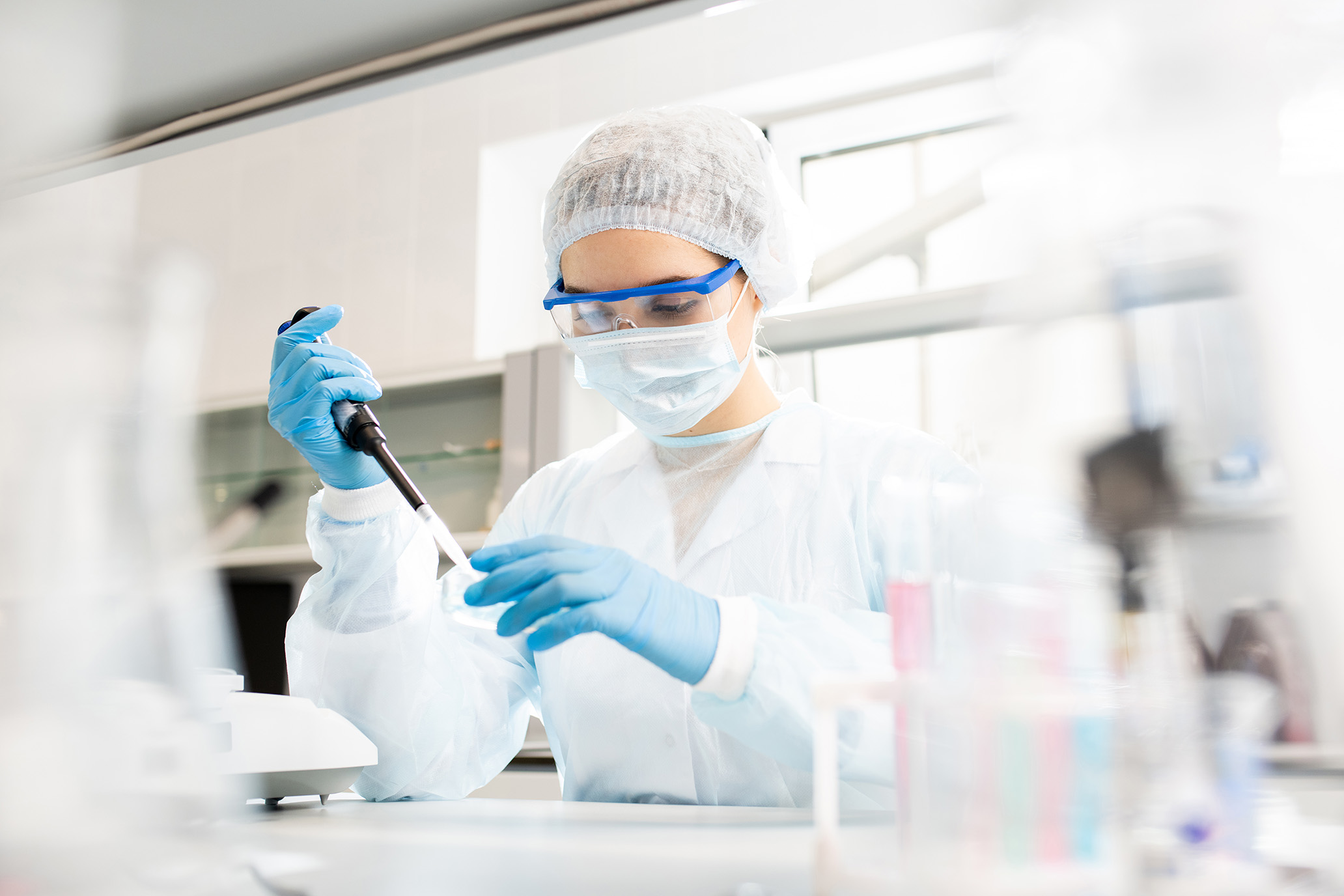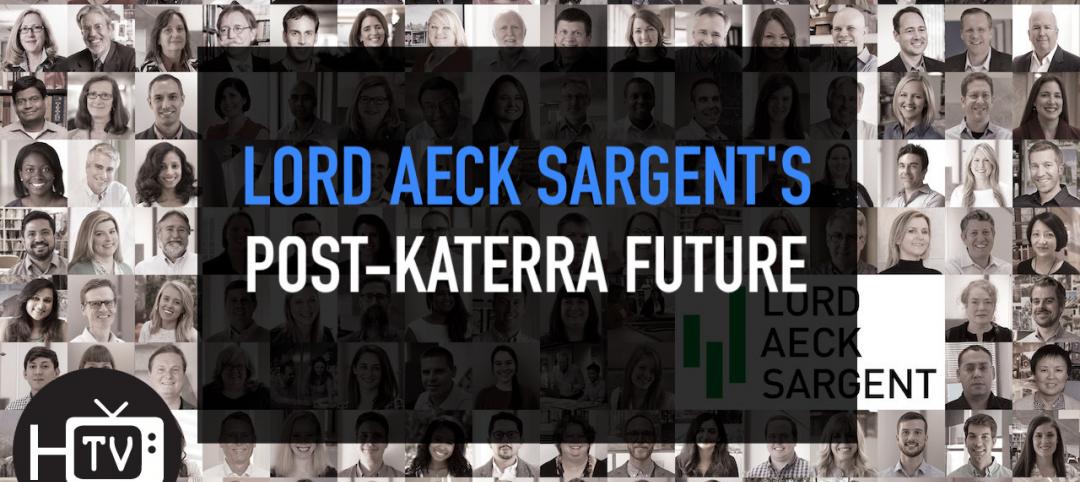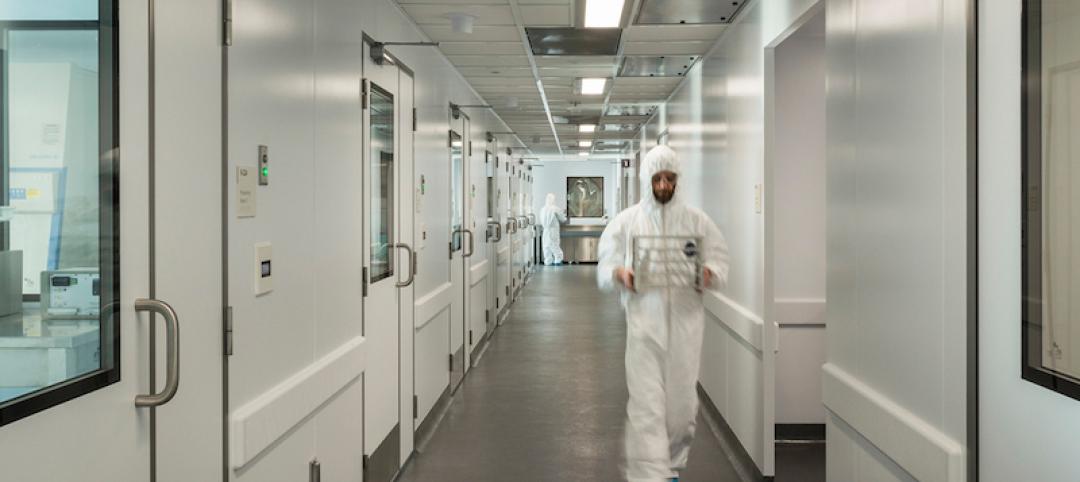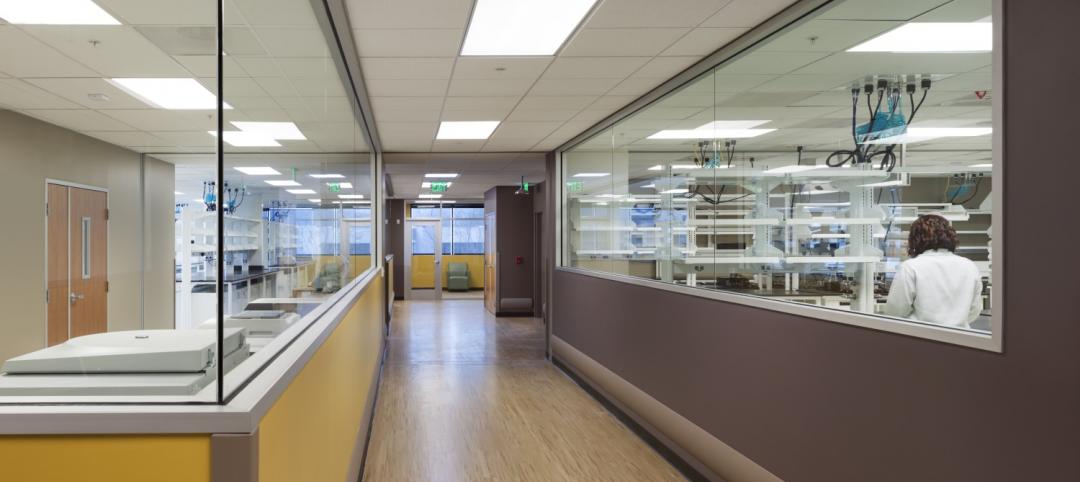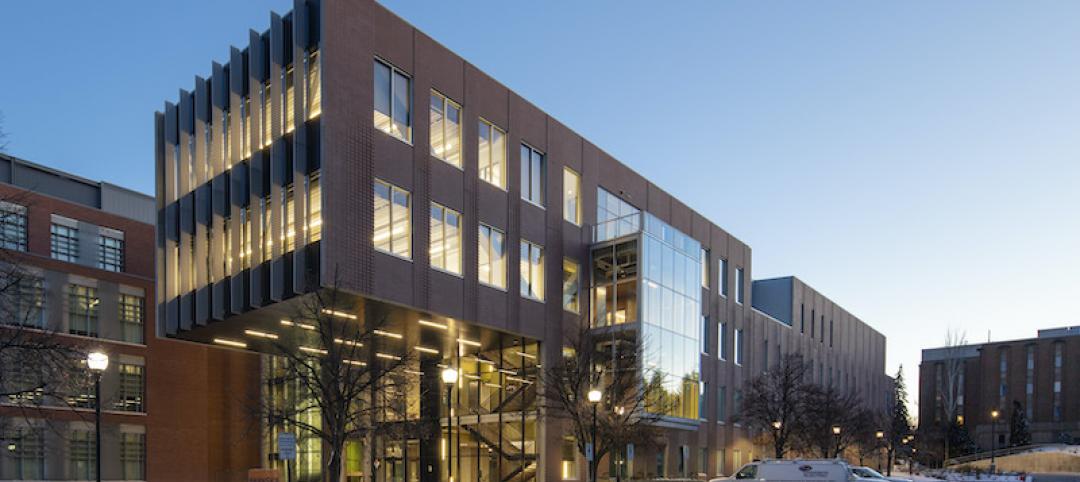A groundbreaking study conducted by ARC – Advanced Research Clusters, HOK, and the University of the West of Scotland (UWS), has revealed that half (48.1%) of all survey respondents who work in laboratory settings identify as neurodivergent, more than double the global average (20%) and more than a quarter (25.5%) identify as autistic, twenty-five times the UK average (1%). Because of this, spaces designed to foster technological and scientific innovation are inadvertently stifling the potential of the brilliant minds working within them by not addressing the sensory processing needs of the occupants.
To date, there has been a dearth of research into creating inclusive scientific spaces. Focused on science and technology innovators in laboratory settings, this study aimed to identify how individuals respond to sensory stimulation in current lab designs. It revealed how neurodivergent individuals are particularly sensitive to auditory, visual and tactile elements, exposing that many existing laboratories are not designed to address these needs holistically. These sensory distractions are linked to cognitive interruptions such as loss of focus and a disruption of creativity and innovation, which directly impacts employee engagement, satisfaction, and productivity.
The study also revealed that a third (29.9%) of the next generation of innovators consider themselves neurotypical. Without inclusive laboratory designs, the scientific research profession risks undermining these brilliant minds, leading to reduced productivity, poor recall, burnout, stress and recruitment and retention challenges.
Results for Designing Neuroinclusive Laboratory Environments
Dr. Edward Edgerton from UWS said: “Often, neurodivergent employees will manage their work environments by hiding signs of their neurodiversity. However, even when their neurodiversity is recognized, their workplaces can still be exhausting, impacting negatively on their performance and wellbeing. Few organizations have considered neurodiversity workspace design particularly for laboratories.”
ARC supports over 300 science and tech organizations and over 10,000 innovators. The anonymised study included lab-based users from ARC’s network, including the renowned Harwell Science Campus, science departments at the University of Oxford and participants from selected European science campuses.
HOK, a leading global architecture firm that specializes in designing neuroinclusive spaces, partnered with ARC and UWS for the research. The team explored ways to identify sensory preferences and challenges and to develop design principles critical to the performance, sense of belonging and overall satisfaction of the people using laboratory spaces. Studies have shown that spaces that support diverse thinking enhance creativity and innovation by 20 percent.
Kay Sargent, HOK’s director of thought leadership, interiors, said: “You don’t have to be neurodivergent to be annoyed by sound, temperature, or light. But what might be annoying for someone who is neurotypical might be debilitating to someone with ADHD, autism, or other neurodivergence. It’s about making spaces more functional for 100% of the people. By creating neuro-flexible spaces, we’re enabling some of the world’s brightest minds to come together, allowing super-creative people to find their own personal, comfortable space.”
Design Strategies for Neurodiverse Laboratories
Design strategies identified by HOK that should be implemented in future laboratory developments include: providing individuals with choices, the right level of sound and auditory controls to support specific tasks, creating spaces with access to natural daylight and biophilic elements, reducing visual clutter, having adjustable ergonomic furniture, incorporating areas within the lab to retreat or reset, and introducing collaborative areas and spaces for doodling.
Jenny Gardner, ARC’s development director said: “At ARC, we understand the importance of creating spaces that support our members in solving the world’s greatest challenges. Until now the industry has failed to address the needs and experiences of neurodiverse individuals, prioritizing sterile, modern looks and open-plan co-working spaces without areas to decompress. We’re committed to changing this by designing inclusive scientific spaces that enable our members to deliver life-changing science.”
Daisy Shearer, a Quantum physicist and neurodiversity advocate, said: "Ensuring scientific workspaces are designed with neuro-inclusion in mind is an often-overlooked aspect to accessibility and the EDI conversation. It's great to see these discussions happening around neurodiversity at ARC, so we can create inclusive spaces where all neurotypes can thrive. Good research and innovation stems from those who work on it, ensuring a diverse group of people can access these careers is key."
Related Stories
Architects | Aug 5, 2021
Lord Aeck Sargent's post-Katerra future, with LAS President Joe Greco
After three years under the ownership of Katerra, which closed its North American operations last May, the architecture firm Lord Aeck Sargent is re-establishing itself as an independent company, with an eye toward strengthening its eight practices and regional presence in the U.S.
Laboratories | May 6, 2021
The big shift: How laboratory design should respond to personalized medicine
Crucial to the success of personalized medicine is the “big shift” away from large-scale pharmaceutical manufacturing to small-scale lab manufacturing.
Laboratories | Mar 10, 2021
8 tips for converting office space to life sciences labs
Creating a successful life sciences facility within the shell of a former office building can be much like that old “square peg round hole” paradigm. Two experts offer important advice.
Giants 400 | Dec 3, 2020
2020 Science & Technology Facilities Giants: Top architecture, engineering, and construction firms in the S+T sector
HDR, Jacobs, and Turner head BD+C's rankings of the nation's largest science and technology (S+T) facilities sector architecture, engineering, and construction firms, as reported in the 2020 Giants 400 Report.
Giants 400 | Dec 3, 2020
2020 Laboratory Facilities Sector Giants: Top architecture, engineering, and construction firms in the U.S. laboratory facilities sector
Affiliated Engineers, HDR, and Skanska top BD+C's rankings of the nation's largest laboratory facilities sector architecture, engineering, and construction firms, as reported in the 2020 Giants 400 Report.
Laboratories | Nov 16, 2020
Washington State University’s new Plant Sciences Building opens
LMN Architects designed the project.
AEC Tech Innovation | Sep 18, 2020
New Innovation Center should heighten Port San Antonio’s tech profile
The facility will include a 2,500-seat arena and serve as new home for the city’s S&T museum.
Laboratories | Aug 25, 2020
Video: What's driving the boom in life sciences real estate?
JLL's Audrey Symes discusses the drivers of growth across the nation's life sciences cluster hubs.
Laboratories | Jul 24, 2020
Customized labs give universities a recruiting edge
CO Architects is among a handful of firms that caters to this trend.


